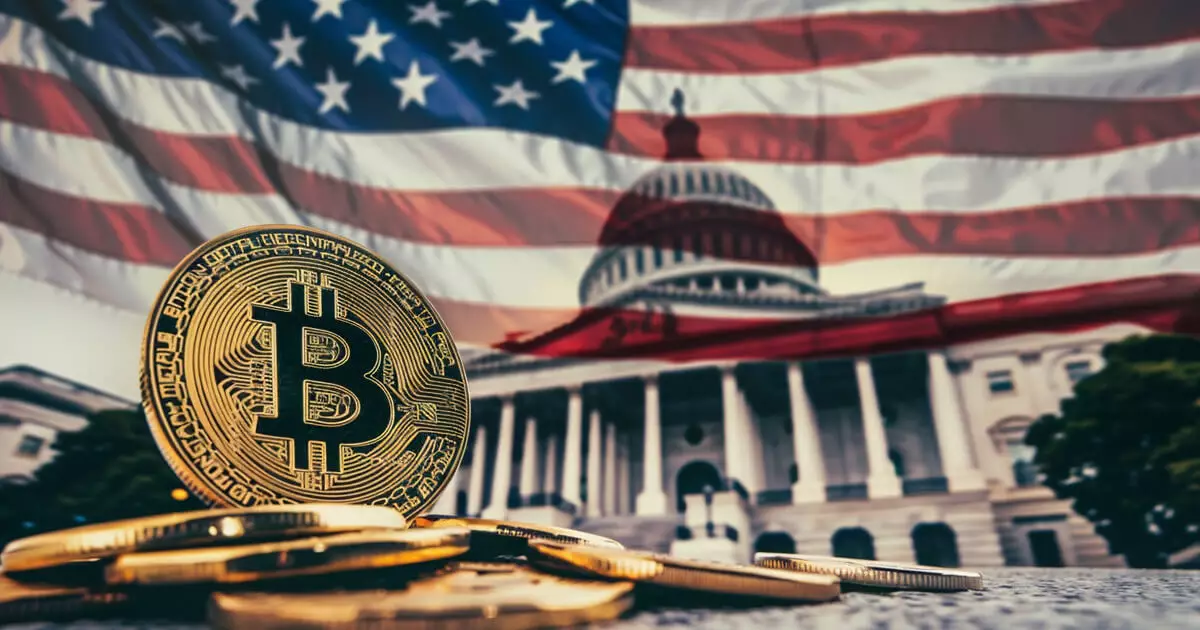As the cryptocurrency landscape continually evolves, the need for a structured regulatory framework has never been more critical. Under the Biden administration, the conversation surrounding cryptocurrencies and stablecoins has intensified, marking a shift from previous years marked by uncertainty. David Sacks, the White House’s designated “Crypto Czar,” has emphasized the administration’s commitment to creating a regulatory environment that supports innovation while ensuring consumer protection. This article delves into the significant measures being proposed, how they reshape the digital asset sector, and the urgency of regulatory clarity.
During a recent press conference, Sacks elucidated the objectives of a newly formed crypto working group established in response to an executive order from former President Trump. A critical focus of the group is the potential establishment of a Bitcoin reserve, a move indicating a growing acceptance within the federal apparatus of cryptocurrencies as an essential component of the financial landscape.
However, an interesting point raised by Sacks was the separation between Bitcoin acquisitions by the government and the operations of the U.S. sovereign wealth fund. This distinction highlights a careful approach to integrating cryptocurrency into governmental finance, suggesting that such discussions are still in their infancy and require thorough evaluation.
The Push for Stablecoin Legislation
One of the primary aims of the White House involves advancing stablecoin legislation within the administration’s first 100 days. As cryptocurrencies have gained traction globally, stablecoins—cryptocurrencies designed to maintain a stable value—emerge as a vital area of focus. Senators, including Tim Scott and John Boozman, have reinforced this notion by distinguishing the regulatory roles of the Securities and Exchange Commission (SEC) and the Commodity Futures Trading Commission (CFTC). This joint effort reflects an intention to clarify the boundaries of crypto regulation in the U.S., helping to provide certainty for innovators in the market.
The Clarity for Payment Stablecoins Act of 2024, recently introduced by Senator Bill Hagerty, proposes a framework for the safe and efficient use of stablecoins. This legislation aims to ensure that stablecoins are rigorously backed by reserves, establishing rigorous standards that could restore confidence in the marketplace. By mandating regular public disclosures and independent audits, the act seeks to enhance transparency, aiming to strengthen the U.S. dollar’s role as a dominant currency globally.
Combating Regulatory Obfuscation
While the ambition for clear regulation is evident, it is essential to understand the context in which these proposals arise. The past few years have seen a significant amount of regulatory uncertainty within the crypto space, leading businesses to seek opportunities abroad. The Trump administration’s years of fragmented approaches failed to establish a consistent regulatory paradigm, often leading to confusion and, in some cases, market exit.
With the SEC’s newly formed crypto task force under Commissioner Hester Peirce (informally known as “Crypto Mom”), a renewed effort to clarify the regulatory landscape is on the horizon. Peirce has acknowledged that the agency’s past strategies towards digital assets have often deviated into ambiguity, creating hurdles for market participants. Aiming to balance investor protection with innovation, this task force plans to develop rules that foster a conducive environment for crypto growth while safeguarding the interests of investors.
The proposed regulatory measures extend beyond just frameworks for issuing stablecoins. The Biden administration recognizes the need for comprehensive consumer protections, especially in an arena as volatile and rapidly evolving as cryptocurrencies are. Provisions for maintaining reserves, operational standards for custodians, and adherence to anti-money laundering regulations demonstrate this recognition. The focus on risk management integrates a preventative approach that many see as essential for long-term stability in the market.
Additionally, the emphasis on interoperability between state and federal regulations aims to streamline compliance for small businesses. This could encourage innovation among lesser-known entities, preventing only larger corporations from dominating the market due to their ability to navigate complex regulatory terrains.
As the Biden administration initiates this monumental shift towards regulatory clarity in the cryptocurrency ecosystem, the implications for both investors and innovators are profound. If executed efficiently, these regulations could reinforce the U.S. dollar’s global supremacy while fostering an environment ripe for innovation. The discussions are not merely about controlling a growing sector but rather understanding and adapting to the technological revolution underscored by cryptocurrencies.
The journey towards a robust crypto regulatory framework is ongoing, and while significant strides have been made, it remains essential for continued engagement from industry stakeholders and the public. As the landscape evolves, the need for collaboration between regulatory bodies and the crypto marketplace will only grow, ensuring that the United States maintains its position as a leader in this transformative sector.

